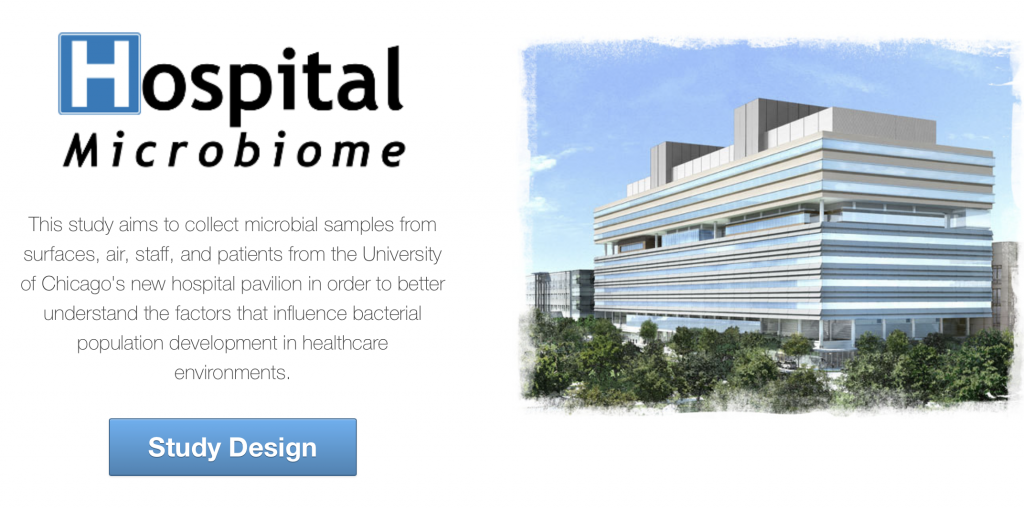The microbial interactions we share with built environments play a central role in shaping the microbiota of our surroundings and in the development of our own microbiome. Nowhere does this microbial flux have more profound implications for human health than in hospitals, where rooms are subject to a constant turnover in occupant, each leaving behind their own microbial signature that may be acquired by subsequent patients. In our recently published paper, we surveyed the bacterial communities associated with a newly constructed hospital during its first year in operation. Sampling patients, nursing staff, and various surfaces within the building allowed us to characterize how microbes are vectored through this environment, and to observe what happens to the skin microbial communities of patients during their stay in the hospital.
We observed an incredible shift in the microbial communities of the hospital after it opened to the public, with skin-associated genera such as Staphylococcus, Streptococcus, and Corynebacterium greatly increasing in abundance. We also observed strong temporal correlations in community structure across different skin and room sites, demonstrating how quickly a new patient can influence the microbiota of their surroundings. When we sampled patients who had just checked into their rooms, and then sampled them again after they had spent their first night in the hospital, we found that patients tended to initially acquire microbes already found in their room but began to influence the microbiota of their surroundings over time. We also found that patients tended to become more microbially similar to their rooms though time, and that patients who were ambulatory and able to walk around their hospital room were more similar to their surroundings than bedridden patients. These non-ambulatory patients also has significantly lower diversity in their skin microbial communities, as did patients who were undergoing chemotherapy. Interestingly, we found no significant effect of antibiotic usage (almost always taken intravenously or orally, rather than topically, by the patients in our study) on patient skin microbial diversity.
There’s still so much we don’t know about how microbes are transferred between patients in hospitals, and epidemiological studies of specific pathogens remain essential in combatting the ever-growing crisis of hospital-acquired infections (HAIs). Still, by zooming out and looking at hospital-associated microbial communities holistically, we hope that we can demonstrates the extent to which the microbial ecology of patient skin and of hospital surfaces are intertwined and inform subsequent studies of HAI transmission.

thanks for the post Simon
Being a worker in the healthcare field, this was an awesome read! I enjoyed it very much. Thanks for sharing!!!
Great post! I am currently a nursing student and am realizing how important the study or micro-organisms is to the future of everyday healthcare. I very soon will be responsible for preventing hospital acquired infections in my patients, and the fact that there is much more to learn regarding the transfer of microbes between patients is a very scary thought. Do you feel that with the incoming flow of new patients and microbes that transmission and sometimes infection is unavoidable?